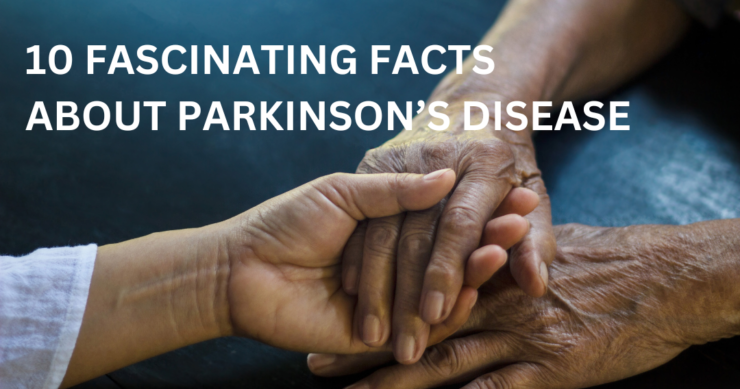10 Fascinating Facts About Parkinson’s Disease You Probably Didn’t Know

Parkinson’s disease (PD) is widely recognized for causing tremors, muscle stiffness, and balance issues. Yet, there’s so much more to this neurological condition than meets the eye. Let’s explore these ten lesser-known facts about Parkinson’s disease that might surprise you:
- Ancient Ailment: The symptoms of Parkinson’s were described in ancient Indian medical practice as early as 600 BC, where it was called “Kampavata”. James Parkinson, an English surgeon, is credited with the modern-day discovery in 1817. He described it as “the shaking palsy” in his essay, but it wasn’t until years later that French neurologist Jean-Martin Charcot named it in Parkinson’s honor.
- More than Movement: While motor symptoms, like tremors, are the most recognizable, PD also presents non-motor symptoms. These can include sleep disturbances, loss of the sense of smell, mood changes including depression, and even cognitive disturbances. Many patients report these non-motor symptoms as significantly affecting their quality of life. And clearly, these issues tend to get a lot less attention in terms of the treatments PD patients receive.
- Unusual Early Signs: Did you know that constipation or a reduced sense of smell could be early warning signs of PD? Researchers believe these symptoms might occur due to the disease’s effects on the brain and nervous system, even before the hallmark motor symptoms appear.
- Coffee and Smokers: Some research has suggested that people who consume more coffee and those who have smoked might have a reduced risk of developing Parkinson’s. While the mechanisms behind this correlation aren’t fully understood, and it’s crucial not to pick up smoking for obvious health reasons, these associations provide intriguing areas for future research.
- Gut-Brain Connection: Studies are increasingly exploring the gut-brain connection in relation to PD. Some scientists believe that Parkinson’s might begin in the gut and move to the brain. They’ve found clumps of the protein alpha-synuclein, associated with PD, in the intestines of patients before it appears in the brain.
- Exercise is Key: Regular exercise is crucial for people with PD. It helps maintain balance, mobility, and daily living activities. Research has also shown that exercising can potentially slow the progression of the disease. From dance to boxing to Tai Chi, diverse routines can benefit patients in unique ways.
- Unique Fingerprints: A fascinating discovery revealed that people with PD have different fingerprint patterns than those without the disease. The ridges appear to be more simplified and less intricate. While it’s too early to determine if this can be a diagnostic tool, it opens up new avenues for research.
- Dopamine’s Dual Role: The loss of dopamine-producing cells in the brain is central to PD. While dopamine replacement can alleviate some symptoms, too much dopamine in other parts of the brain can cause side effects like hallucinations or impulsive behaviors. It’s a delicate balance to strike in treatment.
- Not Just the Elderly: While the average age of onset is around 60 years, about 10% of patients are diagnosed before the age of 50, referred to as Young-Onset Parkinson’s Disease (YOPD). These patients might face unique challenges, as the disease progresses over a longer span of their lives.
- The Power of Creativity: Some patients have reported a surge in creativity after their diagnosis. Whether it’s painting, writing, or any other form of artistic expression, it’s believed that this might be linked to changes in brain chemistry and structure due to the disease. Not only can such activities provide therapeutic relief, but they also shed light on the incredible adaptability and resilience of the human brain.
Parkinson’s disease is a multifaceted neurological disorder with a long history and a wealth of nuances. The more we learn about it, the closer we get to understanding its intricacies, and potentially, finding better treatments or even a cure. Further, now that we see the important relationships between Parkinson’s risk and exposure to various toxins, we can feel justified in our discussion of prevention strategies. Meanwhile, the facts listed above are fascinating and expand our understanding of this increasingly common brain disease.













